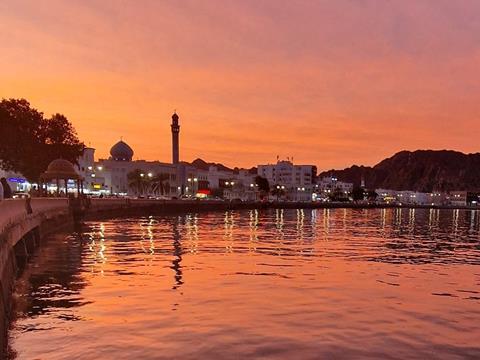2023 saw major earthquakes in Turkey and Morocco, severe thunderstorms and flooding in Saudi Arabia and the UAE, hailstorms in Jordan, a tropical cyclone in Oman, and a major flood in Libya.
The Middle East and North Africa (MENA) has the highest protection gap of any region, globally, and was struck hard by natural catastrophe losses in 2023 – it’s just that almost none of it was insured.

MENA is also heavily exposed to rising temperature due to climate change, globally, and frequency and severity of natural catastrophe losses are increasing, according to a speaker representing Swiss Re at this week’s General Arab Insurance Federation (GAIF34) conference.
Oman has played host to the 34th GAIF event, with more than two thousand delegates descending on Muscat, more than two decades after Oman last hosted GAIF to a fraction of that audience in 2002.
The MENA region is far from immune to nat cat exposure – despite what some in the industry might say – and as events in 2023 have illustrated with tragic consequences.
Beat Strebel, managing director and head of reinsurance for Middle East and Africa at Swiss Re, said: “We’ve had major earthquakes in Turkey and Morocco, severe thunderstorms and flooding in Saudi Arabia and the UAE, hailstorms in Jordan, a tropical cyclone here in Oman, and horrific floods in Libya, causing more than 4,000 deaths and up to $20bn of economic loss, and practically none of that was insured.”
Globally, over the over the past 50 years only 25% of economic losses were insured, according to data presented by Swiss Re, with mature markets in North America, Europe and Japan representing the overwhelming majority of insured losses.
“At the extreme other end of the scale is MENA with insurance protection of only 3.8%,”warned Strebel.
“We have a protection gap of 96%. As an ecosystem – insurance, distributors, regulators, reinsurance – we cannot be proud of that. how relevant are we for the economy; how relevant are we for society?”
He took a long-term view of global insured nat cat losses for five decades, emphasising the role of single-digit billion dollar events adding up to annual claims bills exceeding $100bn for the past four years in a row. Exposures, economic losses and insured losses are all increasing in a linear trend, Strebel explained.
“Insured losses continue to grow, severity of events is increasing, frequency of events is increasing, underlying exposures are increasing, and the accumulation of risks in specifically exposed areas continue to increase. It’s going to a topic on our agenda as long as all of us here will live,” he said.
Temperature rises in MENA are going to be double the global average due to climate change, Strebel warned, which will need more schemes from governments and the insurance industry to help close the protection gap as extreme weather events get worse.
“Worldwide by 2050, we expect the global average temperature to increase by two degrees Celsius, but we expect four degrees of increase in the MENA region. This will lead to more heat waves, more drought, more flash floods and more thunderstorms. It’s quite clear what is ahead of us,” he added.
BLOG: GAIF OMAN 2024
- 1
- 2
- 3
- 4
 Currently reading
Currently readingTemperatures are rising and MENA’s protection gap leads the world – Swiss Re at GAIF34
- 5
- 6
- 7
- 8

















No comments yet